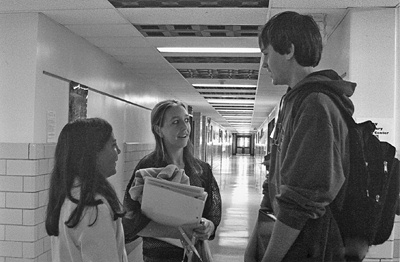All Nonfiction
- Bullying
- Books
- Academic
- Author Interviews
- Celebrity interviews
- College Articles
- College Essays
- Educator of the Year
- Heroes
- Interviews
- Memoir
- Personal Experience
- Sports
- Travel & Culture
All Opinions
- Bullying
- Current Events / Politics
- Discrimination
- Drugs / Alcohol / Smoking
- Entertainment / Celebrities
- Environment
- Love / Relationships
- Movies / Music / TV
- Pop Culture / Trends
- School / College
- Social Issues / Civics
- Spirituality / Religion
- Sports / Hobbies
All Hot Topics
- Bullying
- Community Service
- Environment
- Health
- Letters to the Editor
- Pride & Prejudice
- What Matters
- Back
Summer Guide
- Program Links
- Program Reviews
- Back
College Guide
- College Links
- College Reviews
- College Essays
- College Articles
- Back
Bullies All Around
Bullies All Around
In places all around the world there is bullying, whether it’s physical, emotional, or cyberbullying. People of all ages encounter bullying in their daily lives. American schools hold about 2.1 million bullies and 2.7 million of their victims according to Dan Olweus of the National School Safety Center; 37 percent of adults in the workplace have been bullied, according to the American Justice Department.
Students and adults everywhere are bullied. Most people believe that only children can be bullied, but that isn’t true; adults can be bullied as well. In today’s world bullying has been taken to a whole new level: Cyberbullying. Electronic devices and social media have made it especially easy to anonymously harass someone. Now, not only can you torment someone in person, you can also torment them where they are most comfortable, their own homes. Cyberbullying is becoming more and more available to anyone with any device.
Out of many problems with bullying, one major problem in our society is that boys’ feelings are restricted. It is sometimes considered “gay” to show feelings of weakness or vulnerability; conversely, it is considered masculine to be violent. “The only way boys feel that they can prove their masculinity is violence,” said Jessie Klein the author of The Bully Society: School Shootings, and the Crisis of Bullying in America’s Schools.
Another issue is that many victims of bullying don’t alert anyone. Many cases of bullying go on for long periods of time unnoticed and unreported. 58 percent of kids admit to never confiding in a trusted adult when they were a victim of bullying according to the “Bullying Statistics: Info on Preventing Bullying, Harassment, Online Bullying, and School Bullies” website.
The NYC iSchool is a public high school in New York City. It is a school that promotes group work and friendly relationships. Most faculty at the iSchool believe that it does not have a bullying problem, and only 4 out of 79 students who completed an anonymous survey said that the iSchool has a bullying problem.
“The NYC iSchool does not have a bullying problem, but it is too cliquey. I want more of a sense of community in our school,” said the NYC iSchool guidance counselor, Lizette Colon. The problem with exclusive groups within a school is that tension stays between that certain group. The dispute usually doesn’t spread throughout the school quickly and eventually the teachers are the last ones to find out. Schools often have trouble handling bullying because victims and bystanders rarely inform anyone of the bullying attacks.
Schools can develop specific policies to deal with bullying. The bullying policy in each school affects the result of bullying. If school administrators do not use proper ways to handle the bully’s behavior, the outcome will be worse, according to the website Peaceful Playgrounds.
Currently, it is a race to the top in many schools for titles like “popular” and “cool”. Jessie Klein explained that the kids who are not seen as “popular” are easy targets for bullies because they are vulnerable and not powerful.
In the past the main form of bullying to look out for was face to face physical, verbal and emotional bullying right in schools. Recently, though, the amount of cyberbullying has been on the rise. “Over 80 percent of teens use a cell phone regularly, making it the most popular form of technology and a common medium for cyber bullying,” according to the Bullying Statistics website.
The future of this epidemic can be affected by the administrations that make the schools individual bullying policy. “Teachers should have sensitivity training to learn how to deal with the bullying going on in schools,” Klein said. “Teachers should also create a community focused on making relationships rather than having the children compete against each other for the popular title.” There are many right ways to handle this harassment but on the other hand there are many ways that will eventually make the problem worse. It is essential that the school has an effective policy that works and benefits everyone, she said.
According to studies by Yale University, victims of bully attacks are between 2 to 9 times more likely to consider suicide than non-victims, therefore it is critical to our society that bullying is prevented.

Similar Articles
JOIN THE DISCUSSION
This article has 0 comments.
